
Planetary Picture of the Day
Week of September 16, 2024
Clouds and rocks: from here on Earth to the Moon to Mars to Venus and Titan, we look at some sights that make these worlds interesting.
Monday, 16 September 2024
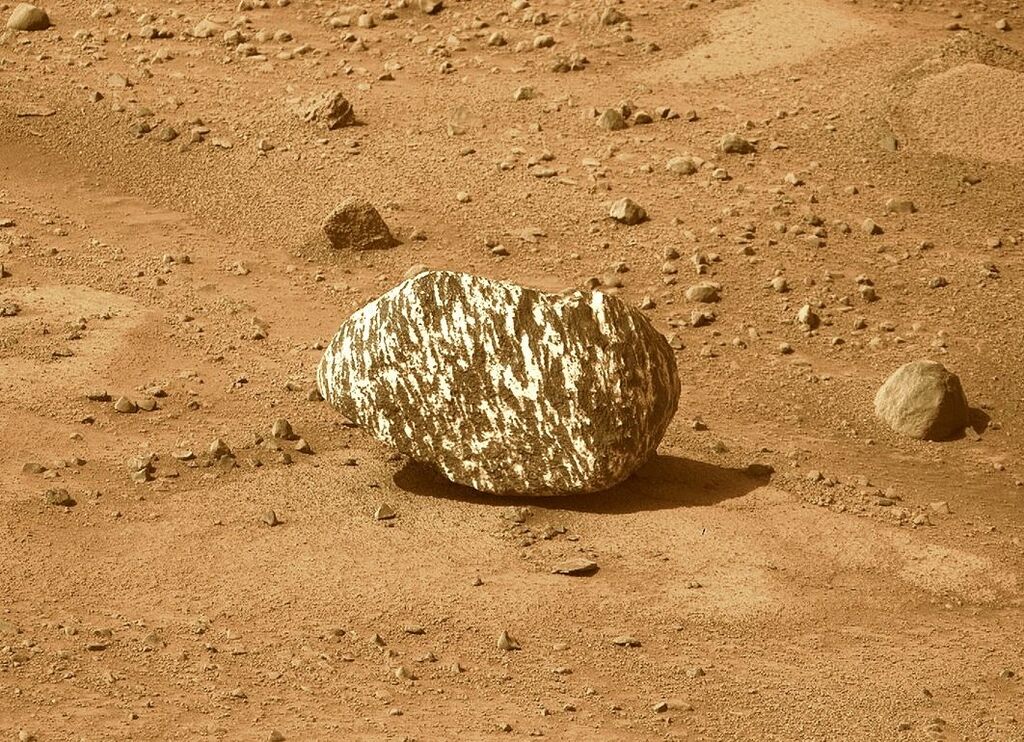
Surprise Martian Rock
Here is a little surprise rock from Mars (another one!). NASA's Perseverance rover made this latest discovery in the Jezero crater, and we cannot wait to hear the analysis results. This rock does not look like anything we have ever encountered on Mars.
Tuesday, 17 September 2024
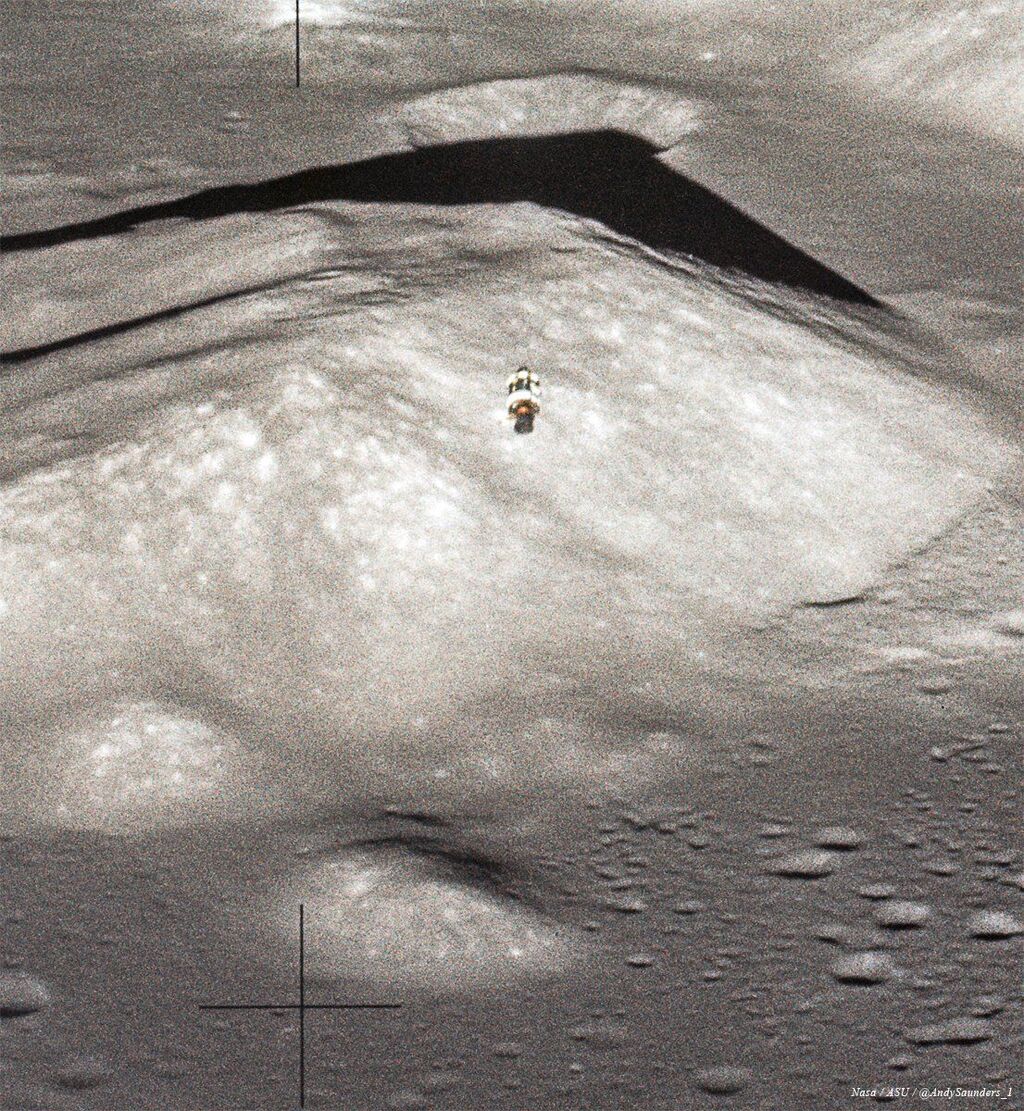
Apollo 17
In 1972, Apollo 17 entered lunar orbit. Astronaut Gene Cernan: “It is absolutely spectacular looking at that Command Module, America...we’re just tracking him at about a 30-degree dive angle. I can even see Poppie [crater], right where we’re going to set this baby down!"
And they did!
Wednesday, 18 September 2024
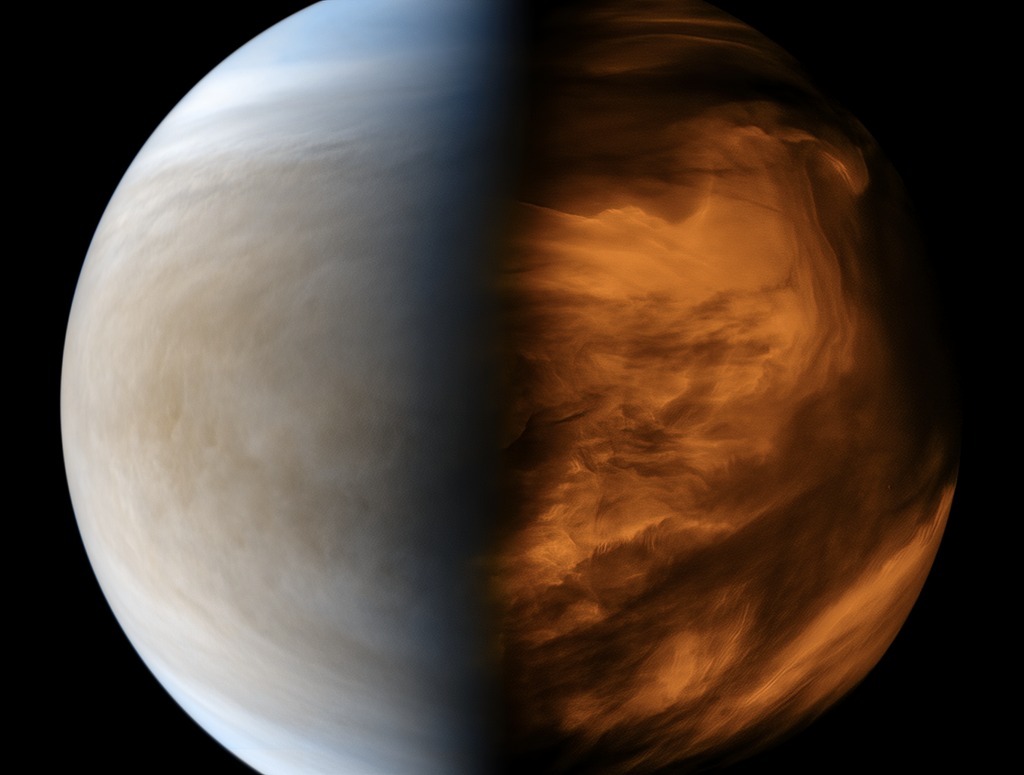
Two "Sides" to Venus
This image is an unusual and clever mosaic of #Venus in ultraviolet and infrared that reflects two different realities of this astonishing planet. Taken by the Japanese Akatsuki orbiter from two separate observations on August 24 and September 4, 2016.
Thursday, 19 September 2024
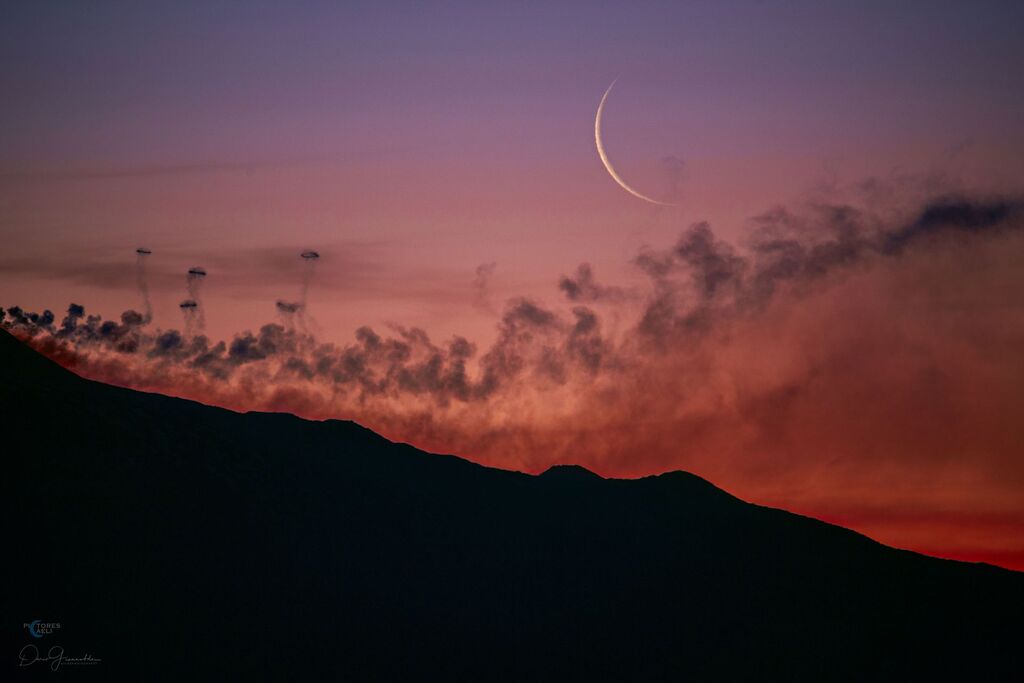
Moon and Smoke Rings from Mt. Etna
Yes, but can your volcano do this? To the surprise of some, Mt. Etna emits, on occasion, smoke rings, technically known as vortex rings. The volcano's walls slightly slow the outside of emitted smoke puffs, causing the inside gas to move faster. A circle of low pressure develops so that the emitted puff of volcanic gas and ash loops around in a ring. This familiar geometric structure can be surprisingly stable as it rises. Smoke rings are quite rare and need a coincidence of the right geometry of the vent, the right speed of ejected smoke, and the relative calmness of the outside atmosphere. Multiple volcanic smoke rings are visible in this featured image taken from Gangi, Sicily, Italy. The scene is shaded by the red light of a dawn Sun, while a crescent Moon is visible in the background.
Friday, 20 September 2024
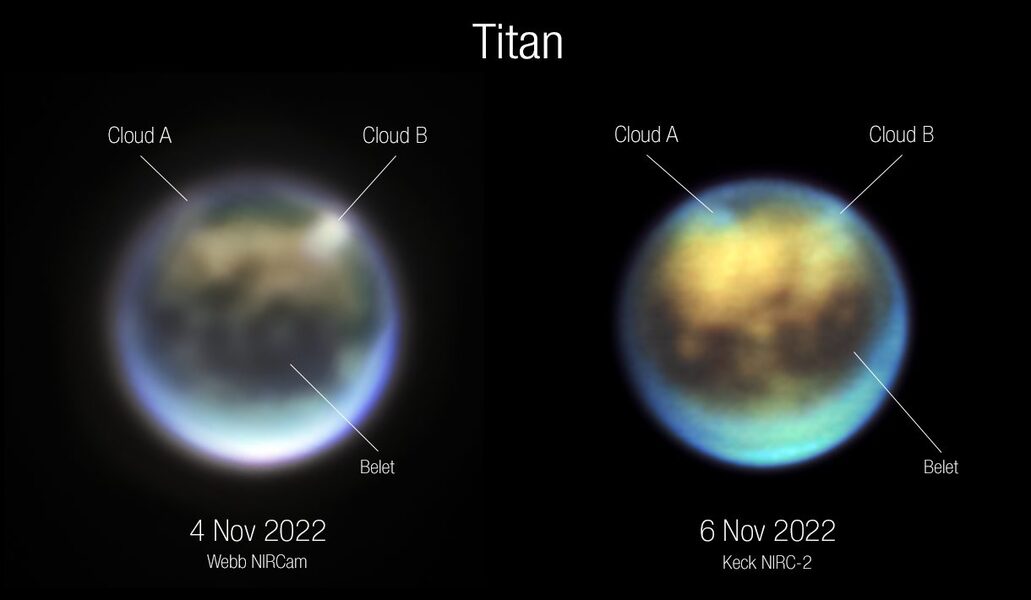
Image Processing: Alyssa Pagan (STScI)
Clouds on Titan
Shown here is the evolution of clouds on Titan over 30 hours between November 4 and November 6, 2022, as seen by Webb NIRCam (left) and Keck NIRC-2 (right). Titan’s trailing hemisphere seen here is rotating from left (dawn) to right (evening) as seen from Earth and the Sun. Cloud A appears to be rotating into view while Cloud B appears to be either dissipating or moving behind Titan’s limb (around toward the hemisphere facing away from us). Clouds are not long-lasting on Titan or Earth, so those seen on Nov. 4 may not be the same as those seen on Nov. 6.





